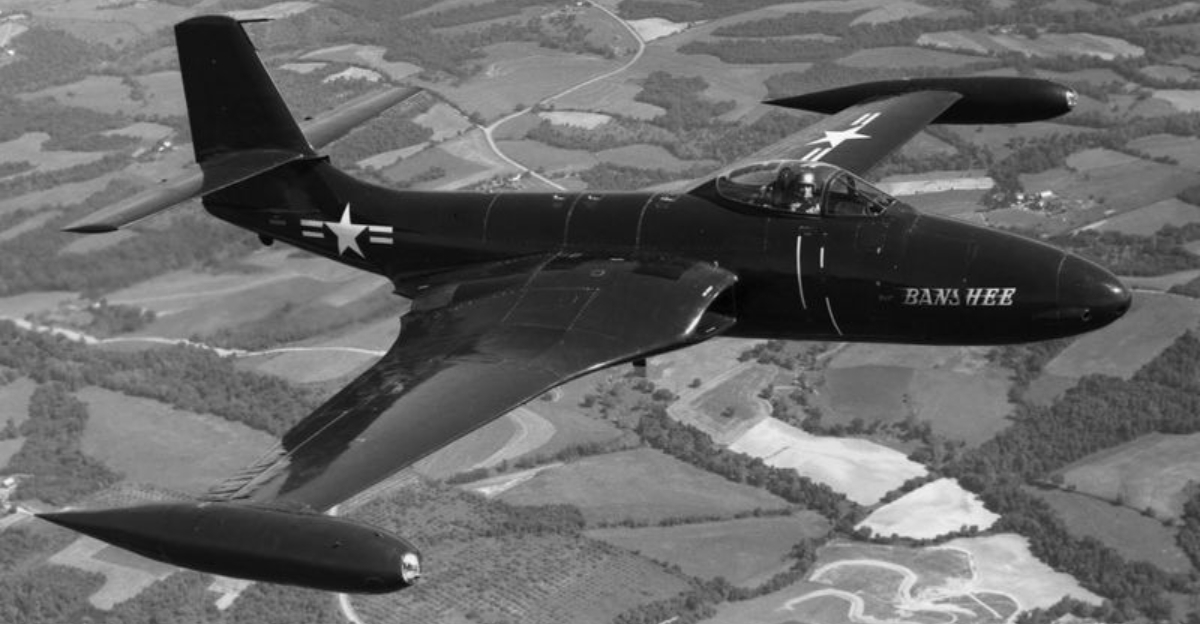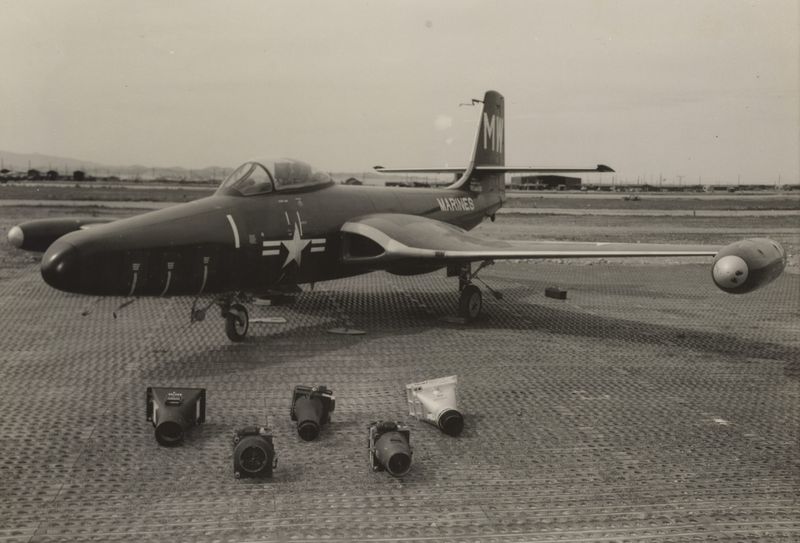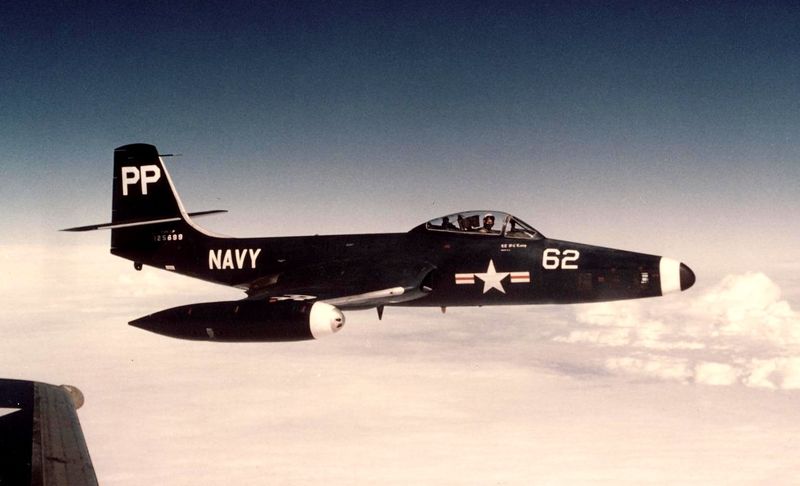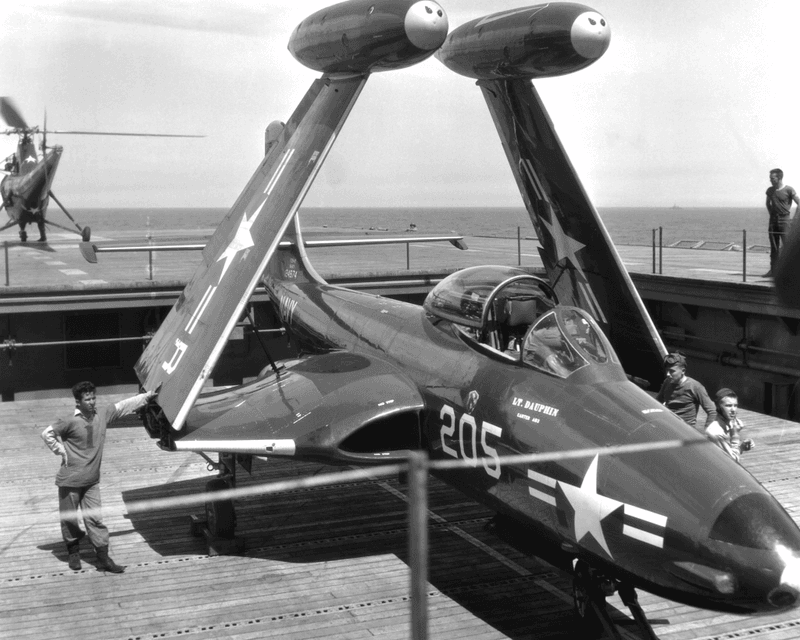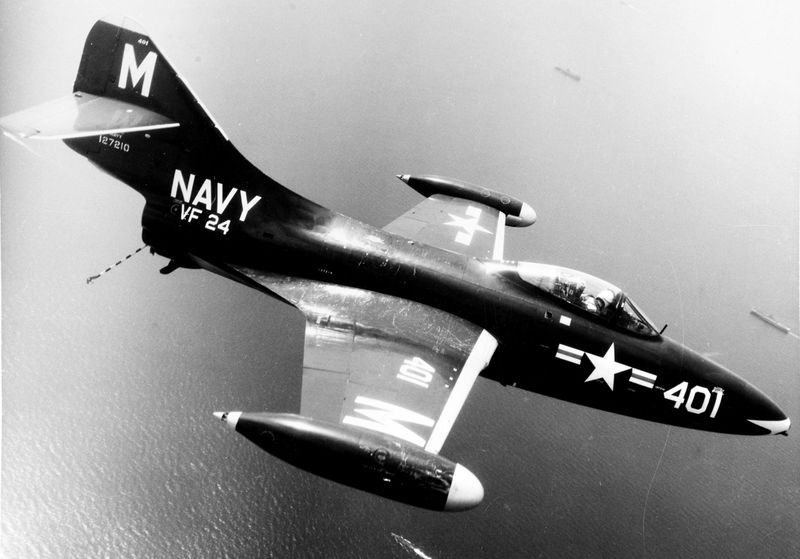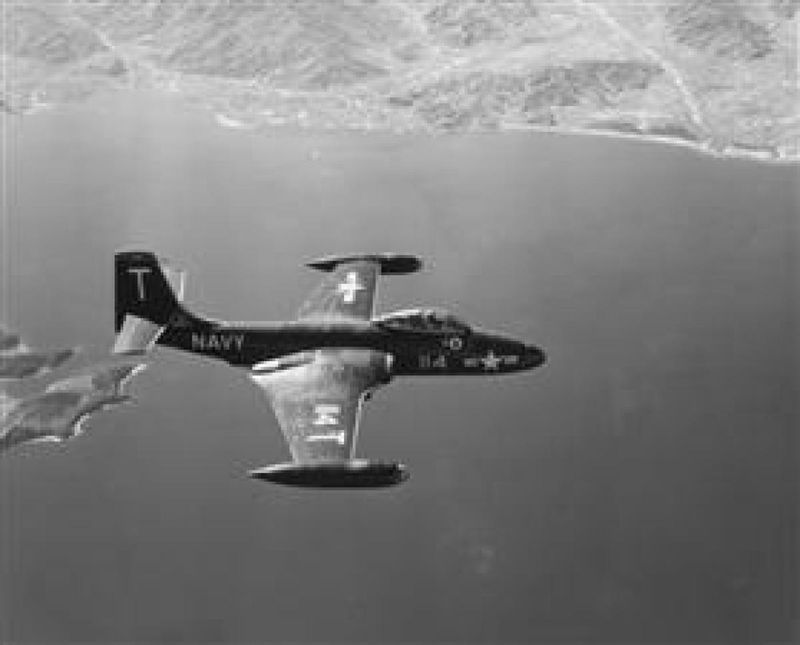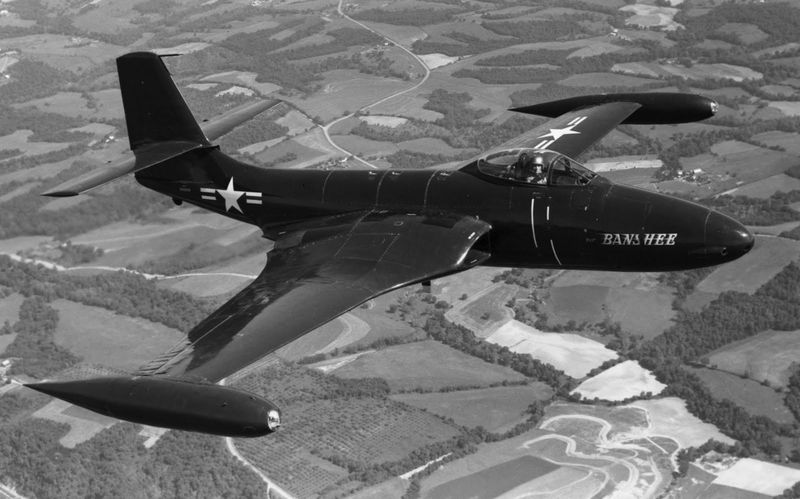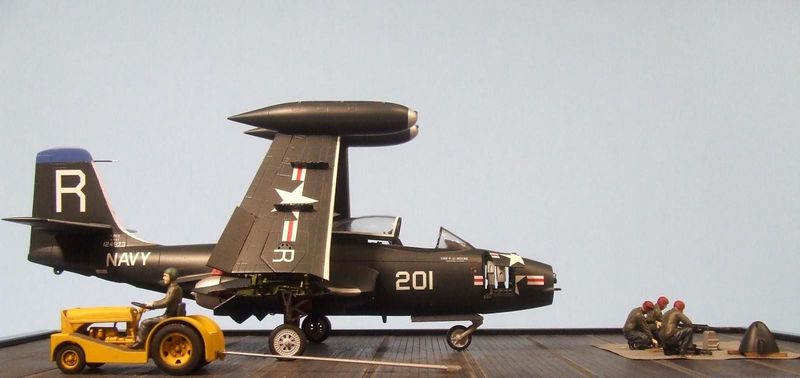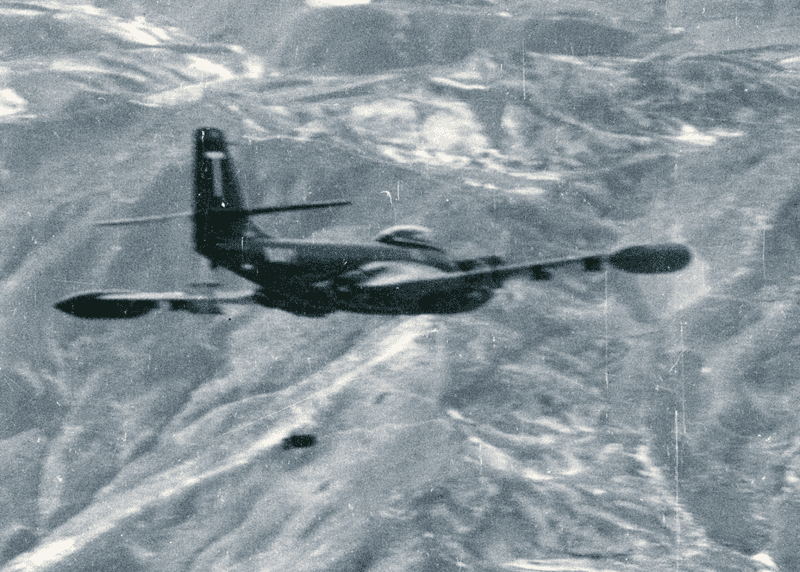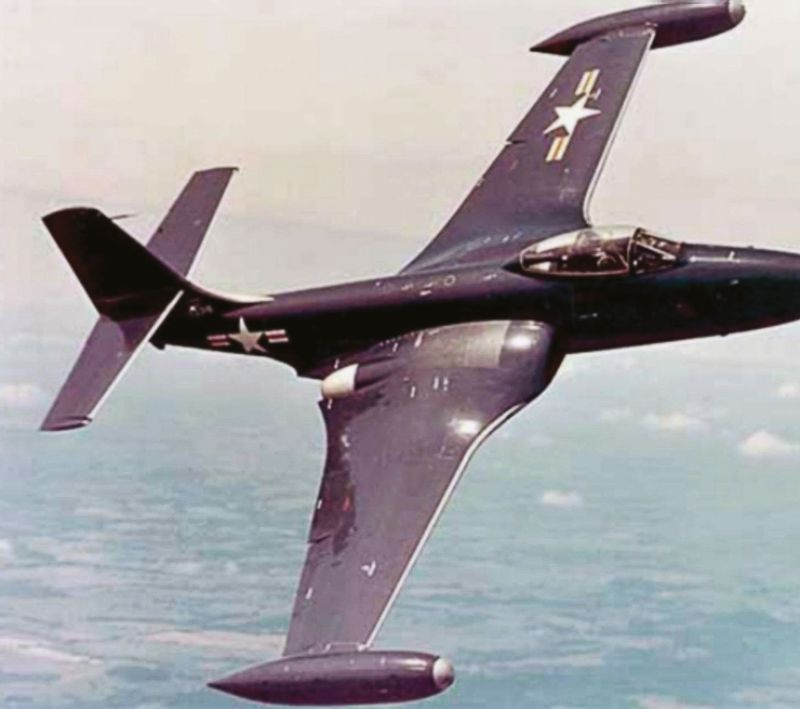While the F-86 Sabre often steals the spotlight of Korean War aviation, one remarkable jet fighter operated quietly from aircraft carriers at sea.
The McDonnell F2H Banshee might not have the fame of other Korean War aircraft, but its impact on the conflict was enormous.
This naval jet performed crucial missions that helped shape the outcome of America’s first jet war.
1. First Naval Bomber Escort
When B-29 Superfortresses needed protection from enemy fighters, the Navy deployed the Banshee as their guardian angel. Flying from aircraft carriers positioned in the Sea of Japan, these jets could reach altitudes where the bombers operated.
Banshee pilots formed protective screens around the vulnerable bombers, scanning the skies for MiG fighters that might threaten the bombing missions. This carrier-based escort capability was revolutionary, allowing American bombing campaigns to continue despite fierce opposition.
2. Eyes in the Sky
The specialized F2H-2P variant carried no weapons at all. Instead, its nose housed six high-resolution cameras that captured detailed images of enemy positions, troop movements, and supply lines.
These photo-reconnaissance missions often required pilots to fly alone and unarmed deep into hostile territory. The intelligence gathered saved countless lives by revealing enemy ambushes and artillery positions. Some Banshees even secretly photographed Chinese bases across the Yalu River, providing crucial intelligence about enemy reinforcements.
3. Nuclear Striker
Few realize that the humble Banshee was among America’s first nuclear-capable carrier jets. The F2H-2B variant underwent special modifications to carry and deliver tactical nuclear weapons.
Navy pilots trained for the sobering mission of delivering these devastating weapons if the Korean conflict escalated to nuclear warfare. Fortunately, this capability was never used in combat. The Banshee’s nuclear role represented a significant advancement in naval aviation and America’s nuclear deterrent strategy during the early Cold War.
4. Dangerous Exits
Imagine flying a jet into combat knowing you couldn’t quickly escape if hit. Early Banshee models lacked ejection seats, forcing pilots to manually climb out of the cockpit if their aircraft was damaged.
This dangerous reality made Banshee missions particularly brave endeavors. Pilots had to unbuckle, open the canopy against rushing air, and physically pull themselves out of the aircraft—all while potentially dealing with battle damage, fire, or loss of control. Later models finally received ejection seats, dramatically improving survival chances.
5. Speed Demon
Raw speed matters in aerial combat, and the Banshee delivered when it counted. With a top speed exceeding 580 mph, it outpaced the Navy’s more famous F9F Panther by nearly 50 mph.
This speed advantage proved critical during interception missions and when evading enemy fighters. Many a Banshee pilot owed their survival to the aircraft’s powerful twin engines. When pursuing reconnaissance targets or escaping danger, pilots could count on the Banshee’s impressive acceleration and sustained high-speed performance.
6. Long-Range Champion
Carrier operations typically suffered from limited range, but the Banshee broke this constraint. With an impressive 1,200-mile combat radius, it could strike targets deep inside Korea from carriers stationed safely at sea.
This extended reach meant Banshees could loiter longer over battlefields, providing crucial air support for ground troops. Naval planners leveraged this capability to maintain continuous air coverage over critical areas without requiring frequent refueling stops or dangerous forward airfields.
7. The Whispering Jet
Carrier deck crews nicknamed the Banshee the “Whispering Jet” for good reason. Compared to the ear-splitting scream of other early jets, the Banshee’s engines produced a relatively modest sound signature.
This quieter operation reduced crew fatigue during intense carrier operations. The Banshee’s gentler acoustic profile also provided tactical advantages, making it harder for enemy forces to detect approaching aircraft by sound alone. Pilots appreciated this quality during night operations when stealth was particularly valuable.
8. Devastating Firepower
Behind the Banshee’s unassuming appearance lurked serious combat punch. Four 20mm cannons mounted in the nose could tear through enemy aircraft or ground targets with devastating effect.
Each cannon fired 600 rounds per minute, creating a lethal cone of fire. Beyond guns, the Banshee could carry up to 1,000 pounds of bombs, rockets, or napalm on eight underwing hardpoints. This flexible weapons loadout made the Banshee equally effective against enemy troops, vehicles, bridges, or aircraft.
9. Arctic Warrior
The Banshee’s versatility extended beyond the Korean peninsula. As Cold War tensions heightened, these jets deployed to frigid northern bases to patrol America’s Arctic frontier against Soviet threats.
Engineers modified Banshees with special cold-weather starting equipment and anti-icing systems. Pilots endured brutal conditions, flying reconnaissance missions over vast ice fields and monitoring Soviet activities near the polar region. These Arctic deployments demonstrated the Banshee’s remarkable adaptability to extreme environments.
10. Silver Screen Star
The Banshee briefly tasted Hollywood fame in the 1955 film “The Eternal Sea.” This movie starred Sterling Hayden and told the story of a naval aviator who continues serving despite losing a leg.
Actual Banshees appeared in several scenes, introducing audiences to this remarkable aircraft. While not as famous as later aviation films like “Top Gun,” this movie preserved the Banshee’s image for future generations. For many Americans, it provided their only glimpse of this important but underappreciated jet fighter.
